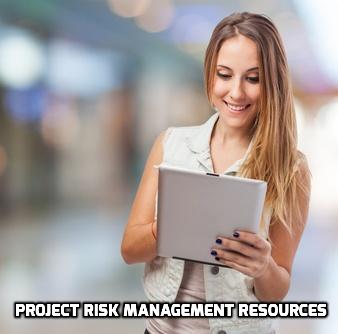
In an era where technology and innovation are at the forefront of business evolution, project managers are continually on the lookout for the magic formula that can streamline processes, enhance transparency, and ultimately drive project success.
Enter blockchain technology.
Often celebrated for its prowess in cryptocurrency, its potential in project management leads to much mysticism and confusion? That’s where you can wave the magic wand and create an incremental improvement in business practices.
Understanding Blockchain
Blockchain is essentially a distributed ledger technology that records transactions across numerous computers so that the record cannot be altered retroactively without the alteration of all subsequent blocks and the consensus of the network. It’s like casting a spell on the project team, this feature makes it incredibly secure and transparent. It is also a quality that is pure gold in project management.
Transparency and Trust
One of the primary benefits of blockchain in project management is its ability to foster trust among stakeholders. In traditional project management, trust often hinges on the reliability of intermediaries or central authorities. With blockchain, every transaction or update is logged in a transparent, tamper-proof manner where all parties can verify the information independently. This reduces disputes, enhances accountability, and ensures that all project stakeholders are on the same page regarding project progress and milestones.
Smart Contracts: Automating Project Workflows
Imagine contracts that execute themselves when certain conditions are met without any human intervention. That’s what smart contracts on a blockchain offer. For project managers, this means:
- Automated Milestone Payments: Funds can be released automatically when a milestone is verifiably reached, reducing delays and disputes over payments.
- Compliance Checks: Smart contracts can verify that project deliverables meet predefined compliance requirements before acceptance or payment.
- Task Automation: Routine approvals and administrative tasks can be coded into the blockchain, allowing for immediate action upon condition fulfillment, speeding up project delivery.
Enhanced Collaboration Across Teams
 Blockchain’s decentralized nature breaks down silos. In projects involving multiple teams or external contractors, blockchain can:
Blockchain’s decentralized nature breaks down silos. In projects involving multiple teams or external contractors, blockchain can:
- Facilitate Real-Time Updates: Every stakeholder can see real-time progress, changes, or issues without needing to go through layers of communication.
- Reduce Redundancy: With a single source of truth for project data, there’s less need for duplicate documentation or redundant communication.
- Secure Data Sharing: Sensitive project information can be shared securely, with access rights managed through cryptographic keys.
Traceability and Auditability
Every transaction on a blockchain is traceable, providing an immutable record of all project activities. This:
- Aids in Project Audits: Auditors can review the blockchain for a complete, verifiable history of project events, transactions, and decisions.
- Improves Quality Control: In industries like construction or manufacturing, blockchain can track materials from origin to installation, ensuring authenticity and quality.
Decentralized Project Management Tools
The integration of blockchain into project management software could lead to platforms where:
- Decisions are Decentralized: Instead of top-down decision-making, blockchain could enable a more democratic approach where decisions are validated by consensus.
- Resource Allocation: Resources could be allocated and managed in a transparent ledger, reducing inefficiencies and ensuring fair distribution based on project needs.
Real-World Applications
- Construction Projects: Blockchain could manage contracts, track materials, ensure compliance with safety regulations, and automate payments, reducing the risk of fraud and errors.
- Supply Chain Projects: For projects involving logistics, blockchain can provide a tamper-proof ledger of product movement, from manufacturing to delivery.
- Software Development: Smart contracts could automatically trigger code reviews or testing upon completion of development phases, ensuring quality checks are never overlooked.
Challenges and Considerations
Adopting blockchain isn’t without hurdles:
- Technical Complexity: Understanding and implementing blockchain requires a learning curve which might deter some organizations.
- Scalability: Current blockchain networks can struggle with high transaction volumes, which might not suit large-scale projects.
- Legal and Regulatory: The legal standing of smart contracts varies by jurisdiction, and regulatory frameworks are still catching up.
- Cost: Initial setup and maintenance of blockchain systems can be costly.
The Future Outlook
As blockchain technology matures, its adoption in project management is poised to grow. Project managers might soon find themselves not just managing traditional KPIs like time, cost, and quality but also dealing with consensus mechanisms, smart contract coding, and digital trust management. The technology promises not just incremental improvements but a fundamental shift in how projects are conceptualized, executed, and completed.
Conclusion
From automating mundane tasks to ensuring every stakeholder has access to an unalterable truth of project progress, blockchain could indeed be the secret weapon for those looking to not just succeed, but excel in their projects. As with any disruptive technology, the key lies in understanding its capabilities, navigating its challenges, and creatively applying it to enhance project outcomes in this ever-evolving digital landscape.
For project managers, blockchain represents a frontier of opportunity. By leveraging this technology, one can potentially dismantle many of the inefficiencies plaguing traditional project management.
So, while blockchain isn’t a panacea for all project management woes, its integration could very well be likened to discovering a new tool in your project management toolkit – one that’s both ancient in concept (think of it as a modern-day ledger) yet futuristic in application. Here’s to managing projects with a bit more transparency, a lot less friction, and perhaps, a dash of cryptographic magic.











Leave a Reply